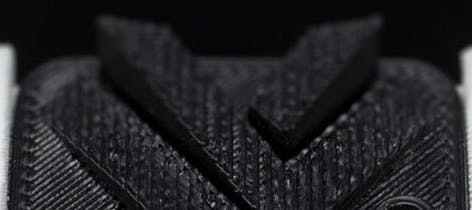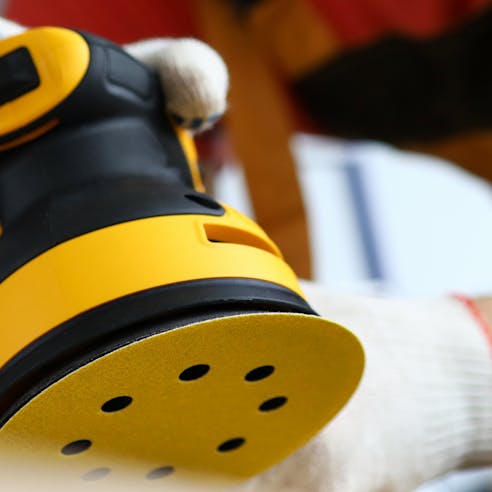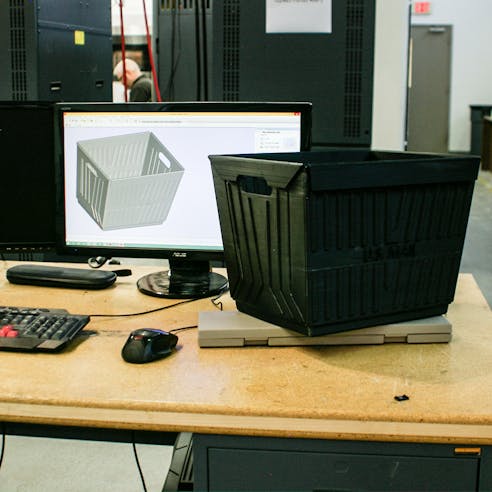Polycarbonate 3D Printing
Get instant online quotes on custom 3D printed polycarbonate parts. Free shipping on all US orders. ISO 9001:2015, ISO 13485, IATF 16949:2016, and AS9100D certified.

About Polycarbonate 3D Printing
Polycarbonate (PC) is a thermoplastic with excellent mechanical properties and some of the best temperature resistance of any common FDM 3D printing plastic. PC can be subjected to high levels of plastic deformation without breaking. It is useful for both end-use parts and functional prototypes in the medical and automotive industries.
Polycarbonate printing can be more difficult than other standard FDM plastics due to its high glass transition temperature. This means the print must be done at a far higher temperature than other standard plastics like PLA or ABS. PC is also a good electrical insulator wherein some grades of polycarbonate can be sterilized with various standard processes making it ideal for food or medical applications.
Applies to US-based production only.
FDM PC
Standard polycarbonate has excellent mechanical properties that far exceed those of other popular high-strength plastics like ABS. This makes polycarbonate ideal for functional prototypes and manufacturing tools as well as end-use parts.
| Tensile Strength (MPa) | Elongation at Break (%) | Hardness (Rockwell) | Heat Deflection Temperature (℃) | Glass Transition (℃) |
|---|---|---|---|---|
Tensile Strength (MPa) 68 | Elongation at Break (%) 5 | Hardness (Rockwell) 115 | Heat Deflection Temperature (℃) 138 | Glass Transition (℃) 161 |
Applies to US-based production only.
FDM PC-ABS
As the name suggests, PC-ABS plastic combines these two popular plastics to create a material that contains properties of both. It has the high strength and temperature resistance of polycarbonate while maintaining some of the flexibility of ABS. 3D printing in PC-ABS is ideal for end-use parts that need to be flexible and don’t need to focus on temperature resistance.
| Tensile Strength (MPa) | Elongation at Break (%) | Hardness (Rockwell) | Heat Deflection Temperature (°C) | Glass Transition (°C) |
|---|---|---|---|---|
Tensile Strength (MPa) 29 | Elongation at Break (%) 2 | Hardness (Rockwell) 110 | Heat Deflection Temperature (°C) 110 | Glass Transition (°C) 125 |
Applies to US-based production only.
FDM PC-ISO
This version of PC is biocompatible under ISO 10993 USP class IV and can be either gamma- or EtO-sterilized. The ability to be sterilized, coupled with PC’s mechanical and thermal properties, makes this variant ideal for medical device prototyping and food packaging.
| Tensile Strength (MPa) | Elongation at Break (%) | Flexural Strength (MPa) | Heat Deflection Temperature (°C) | Impact Strength Notched (J/m) |
|---|---|---|---|---|
Tensile Strength (MPa) 57 | Elongation at Break (%) 4 | Flexural Strength (MPa) 90 | Heat Deflection Temperature (°C) 133 | Impact Strength Notched (J/m) 86 |
Applies to US-based production only.
Finishes
3D printing in PC using FDM technology does not typically give you many potential surface finishes. However, PC is available in black, white, or clear plastic. In addition to this, some basic surface finishes are listed below.
Standard: Support structures are removed and some light sanding is performed at the support locations. It must be understood that in general FDM creates a surface texture with visible layer stepping. If a completely smooth part is required right off the machine, other 3D printing technologies like SLS or HP Multi Jet Fusion should be considered.
Custom: Custom surface finishes like painting and additional sanding can be requested. Polycarbonate FDM parts react well to sanding, so excellent surface smoothness can be achieved.

Cost-saving Design Tips
DFM: FDM 3D printing in PC requires special considerations when designing parts. FDM constructs parts from the bottom up, so any large overhangs will require support. Large internal cavities are not ideal as support structures cannot be removed. This can, however, be overcome with special soluble supports. To gain the most benefit from the material when 3D printing in PC, parts should not be designed to have loads applied perpendicular to the print layers.
Material Choice: PC is a relatively low-cost plastic but is still more expensive than other commodity thermoplastics like PLA or ABS. It should only be used if the resulting part needs to be strong or resistant to high-temperature conditions.

